Installation view.
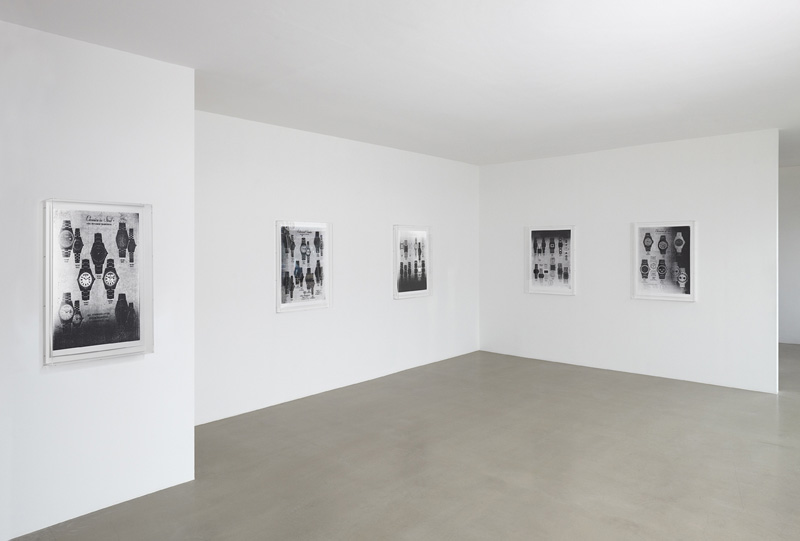
Installation view.
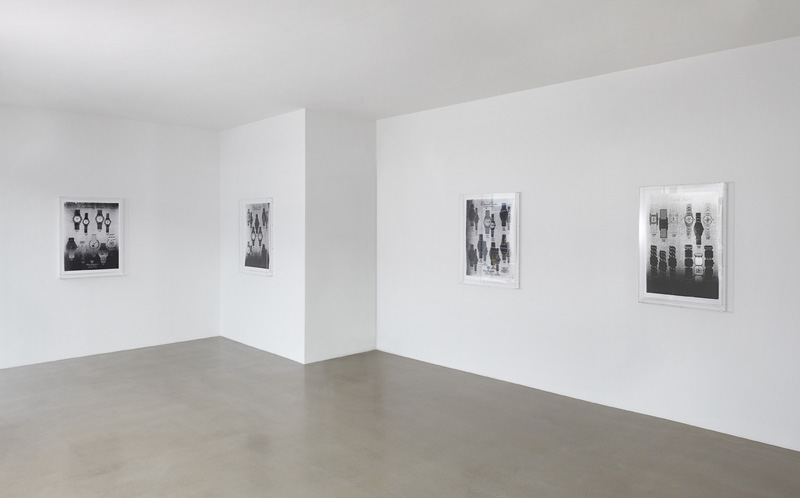
Contemporary Designs, 2011.
Unique silk-screen print on Fabriano 4 paper, mounted in Perspex box frame.
Overall dimensions: 75 x 97 x 9 cm.
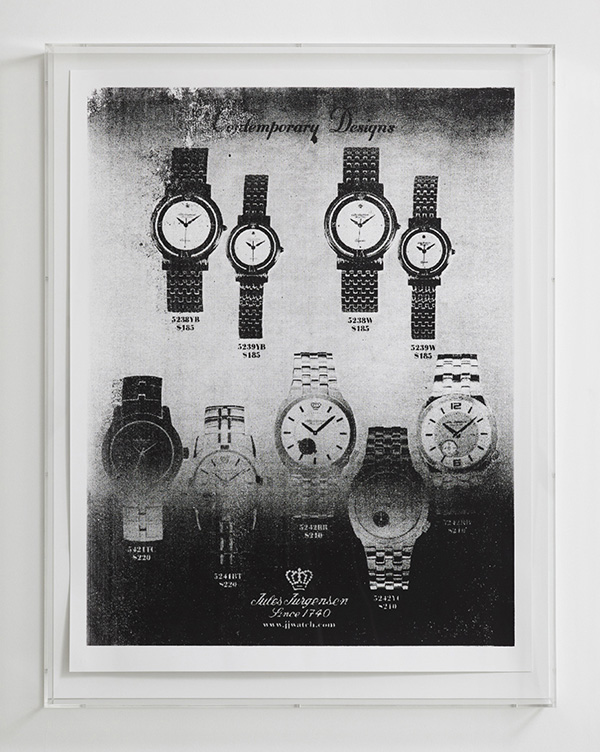
Enhanced Classics, 2011.
Unique silk-screen print on Fabriano 4 paper, mounted in Perspex box frame.
Overall dimensions: 75 x 97 x 9 cm.
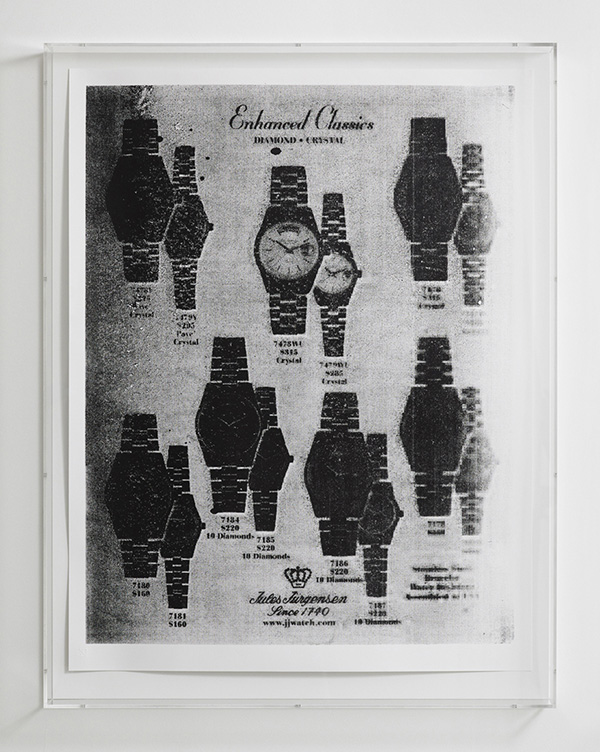
Deco Designs, 2011.
Unique silk-screen print on Fabriano 4 paper, mounted in Perspex box frame.
Overall dimensions: 75 x 97 x 9 cm.
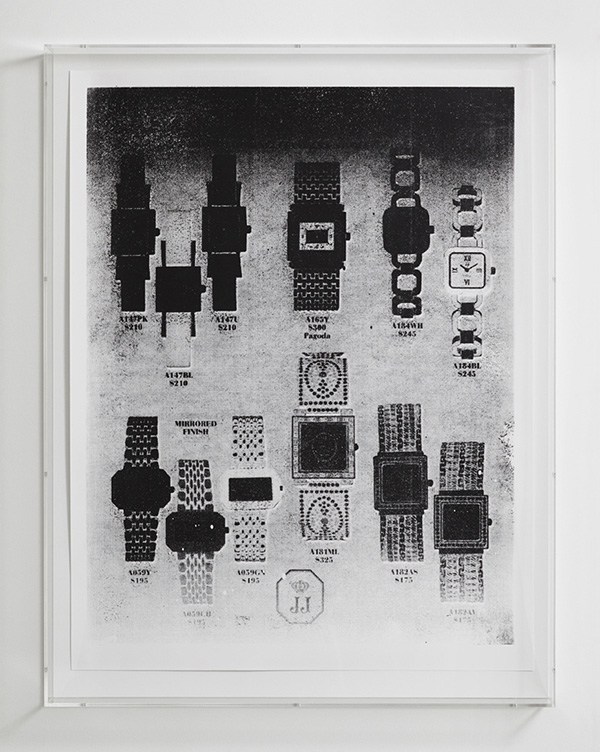
Classics In Steel, 2011.
Unique silk-screen print on Fabriano 4 paper, mounted in Perspex box frame.
Overall dimensions: 75 x 97 x 9 cm.
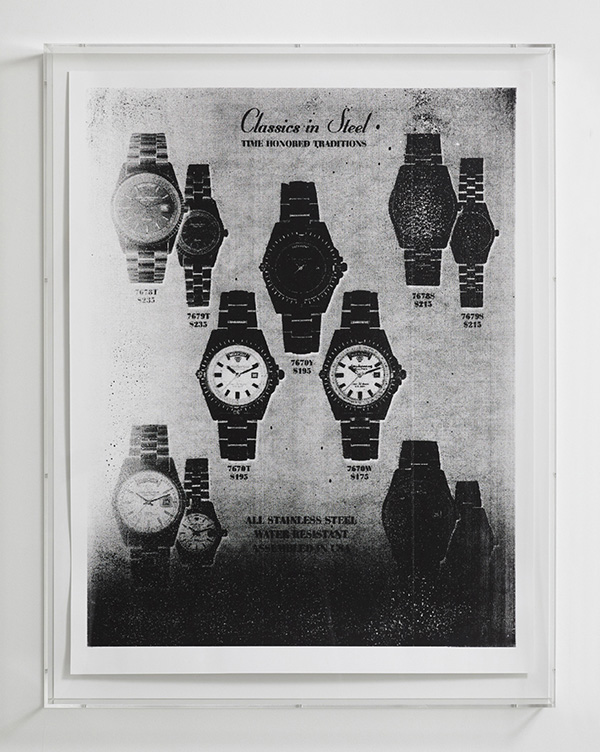
Crystal Fashion, 2011.
Unique silk-screen print on Fabriano 4 paper, mounted in Perspex box frame.
Overall dimensions: 75 x 97 x 9 cm.
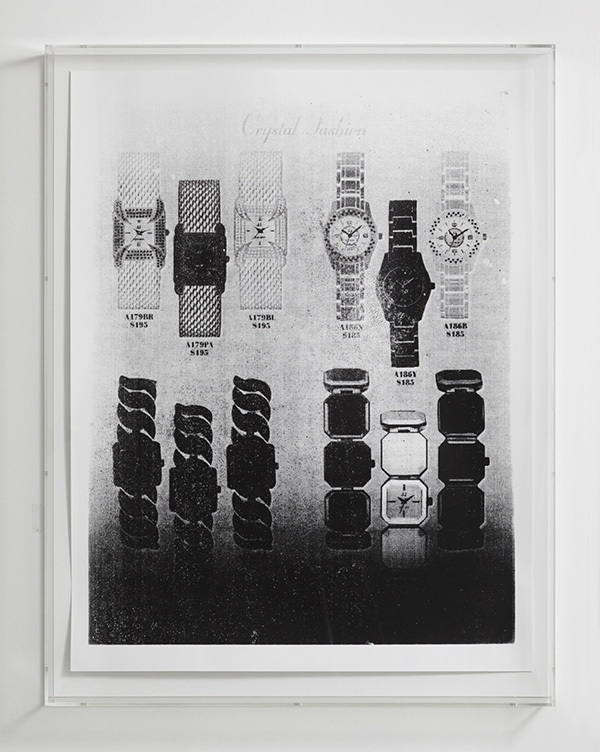
Elements Of Time, 2011.
Unique silk-screen print on Fabriano 4 paper, mounted in Perspex box frame.
Overall dimensions: 75 x 97 x 9 cm.
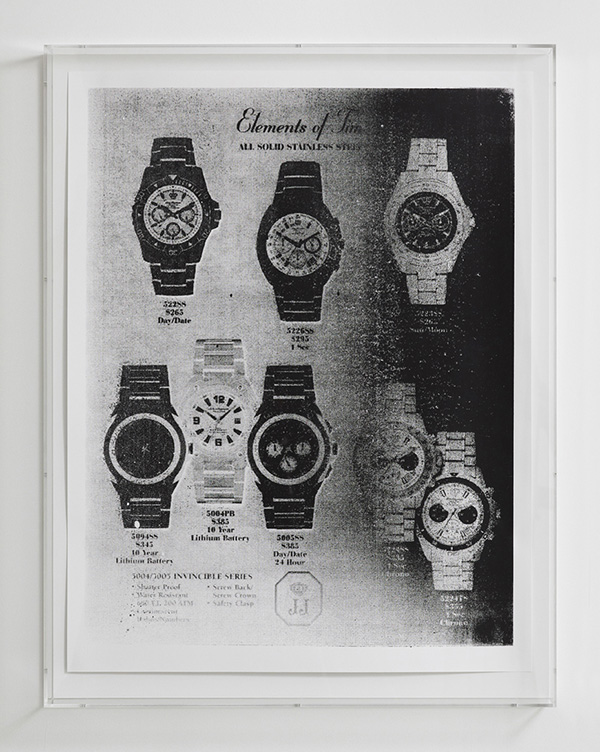
Contemporary Designs, 2011.
Unique silk-screen print on Fabriano 4 paper, mounted in Perspex box frame.
Overall dimensions: 75 x 97 x 9 cm.
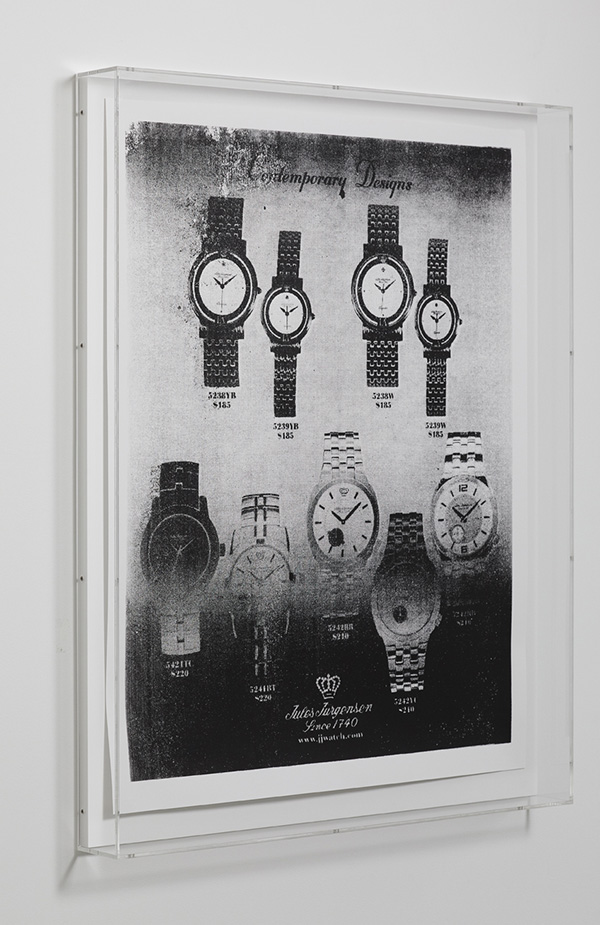
Enhanced Classics, 2011.
Unique silk-screen print on Fabriano 4 paper, mounted in Perspex box frame.
Overall dimensions: 75 x 97 x 9 cm.
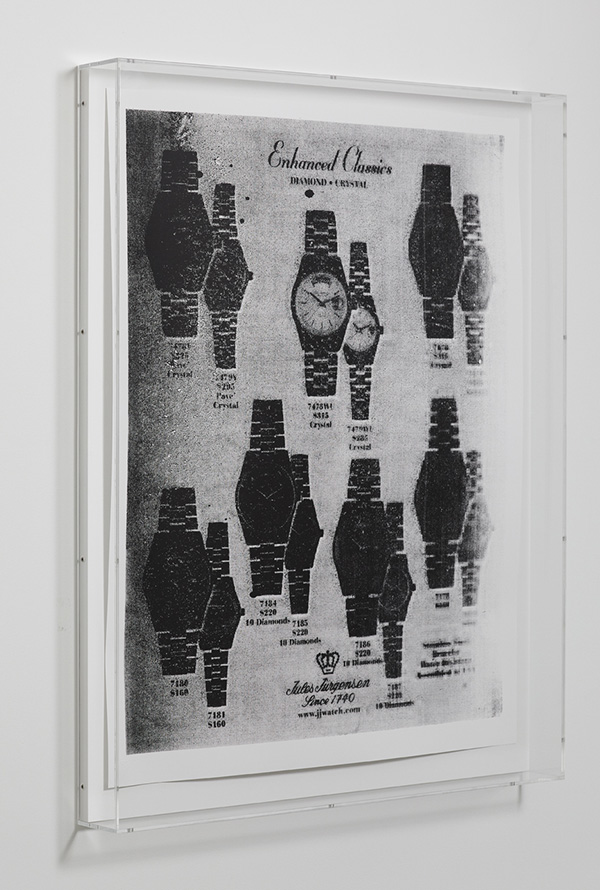
All That is Solid Melts Into Air, 2011.
Found hard drive discs, wood, string.
20 x 20 x 85 cm.
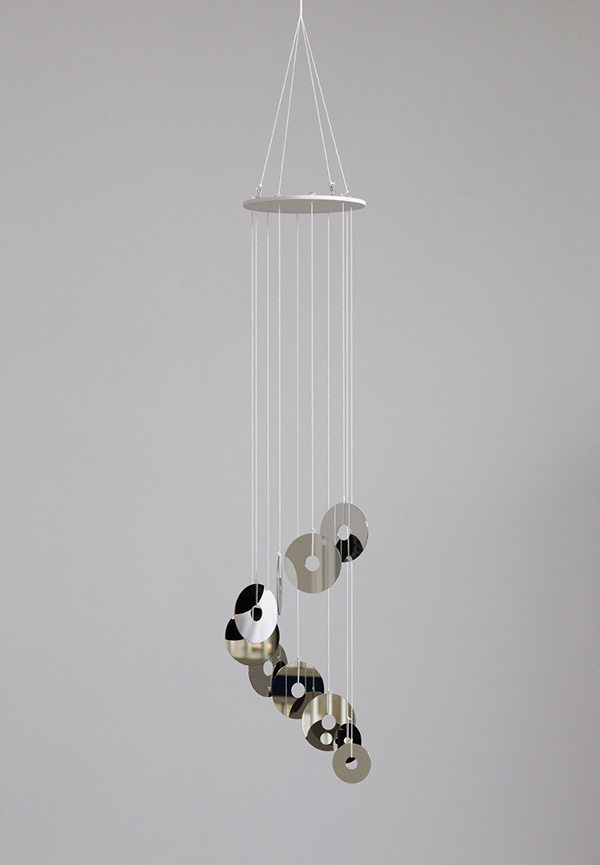
Gallery
Høkerboderne 17-19
1712 Copenhagen V
+ 45 3325 4101
info@christianandersen.net
christianandersen.net
Welcome to the opening of the Jacob Dahl Jürgensen’s solo show All that is Solid melts into Air Friday 12 August from 5 - 8 pm.
There is an expression in the US that says, ‘I was a general so my son could be a Senator. I was a Senator so my son could be a banker. I was a banker so my son could be an artist.’ The expression has always resonated, mapping as it does a series of values – implicitly, the triumph of the cultural – as well as a very real Western socio-economic history, from warring communities to the incorporation of a body politic towards a society structured around economics – and, ultimately, towards one predicated on artistic merit (which I think we are all still waiting for).
Mimicking a jewellery shop (complete with display cases with commodities, and a bell announcing the arrival of customers) Jacob Dahl Jürgensen’s exhibition takes a similarly generational view of society and economics, again looking at it through the prism of the familial. The show takes as its focal point the watch manufacturing company Jules Jürgensen, to whose founder Jacob Dahl Jürgensen is distantly related. Established in the mid-1700s, the company became one of the most successful watchmakers of the industrial revolution, an era almost symbolic of precise time-keeping and mechanical implements. These were not mere commodities but were intimately related to the territorial expansion of that time period; Jules Jürgensen, for example, manufactured the marine chronometers used by the Danish merchant navy. Later the watchmaker’s was sold to an American company, and became in the last century a manufacturer of cheap Rolex replicas, before going bust in the aftermath of the 2007 financial crisis. It thus tracks, in many ways, the move from early industrial familyowned companies to the current economy, in which an object’s worth is derived not intrinsically but by the status or fetish attached to it (here, that of the Rolex name). The company’s closure signals, perhaps, its comeuppance but also the end of a particular world view.
For Jürgensen adds to the narrative arc of the saying quoted above a paradigm shift: that from the analogue to the digital. Vast amounts of information are now digitally stored on hard drives, like the ones used by Jürgensen to construct the chime hanging by the entrance to the gallery, the work that also lends the show its title (‘All That Is Solid Melts into Air’ – itself a quote from Marx). Information, immaterial but for the reflective disk, memory stick or hard drive it is stored on, makes headline news, brings down governments, identifies ‘terrorist’ suspects and strikes them remotely. People wave hello on Skype from thousands of miles away. Distances are compressed and time enters a continuous now. Against this present is the family story of the past, symbolised in the faded, fading catalogue reproductions of the ‘contemporary design’ watches that hang on the wall in this exhibition: time-keepers whose time, in so many ways, has passed.
For many members of a mid-thirties generation, it seems particularly poignant that this shift should be symbolised in a watch – a watch being, perhaps, the first item that one owned that once was analogue, and which then suddenly took on the rectangular shape and LED numbers of the digital wristwatch. What of all the time spent learning the twelve-hour analogue clock! All that knowledge, obsolete in our own lifetime. Contemporary artists have lately taken the role of archaeologists, archivists or historians, and this exhibition, unlike Jürgensen’s previous works that rather investigated the movement of bodies and light through space, is of this kind. Artists no longer act as agents of the modernist ‘new’ – but one could argue that their interest in the past represents an attempt similar to modernism in trying to preserve a temporality that is being sidelined by the majority. In mapping the Jules Jürgensen company, Jürgensen seeks to put our latest socio-economic shift in historical perspective, but also (a modernist impulse) to make digitisation ‘strange’ again, to remind viewers, some of whom are the last of the pre-computer generation, of the ways and means of an analogue world – its slowness, its lack of standardisation and, above all, its materiality and comprehensibility. What information lies invisible, hanging in the chime by the door?
Melissa Grönlund, July 2011
Melissa Grönlund is the Managing Editor of Afterall, an arts journal based in London. She is a frequent contributor to numerous publications including frieze and Cabinet magazines.